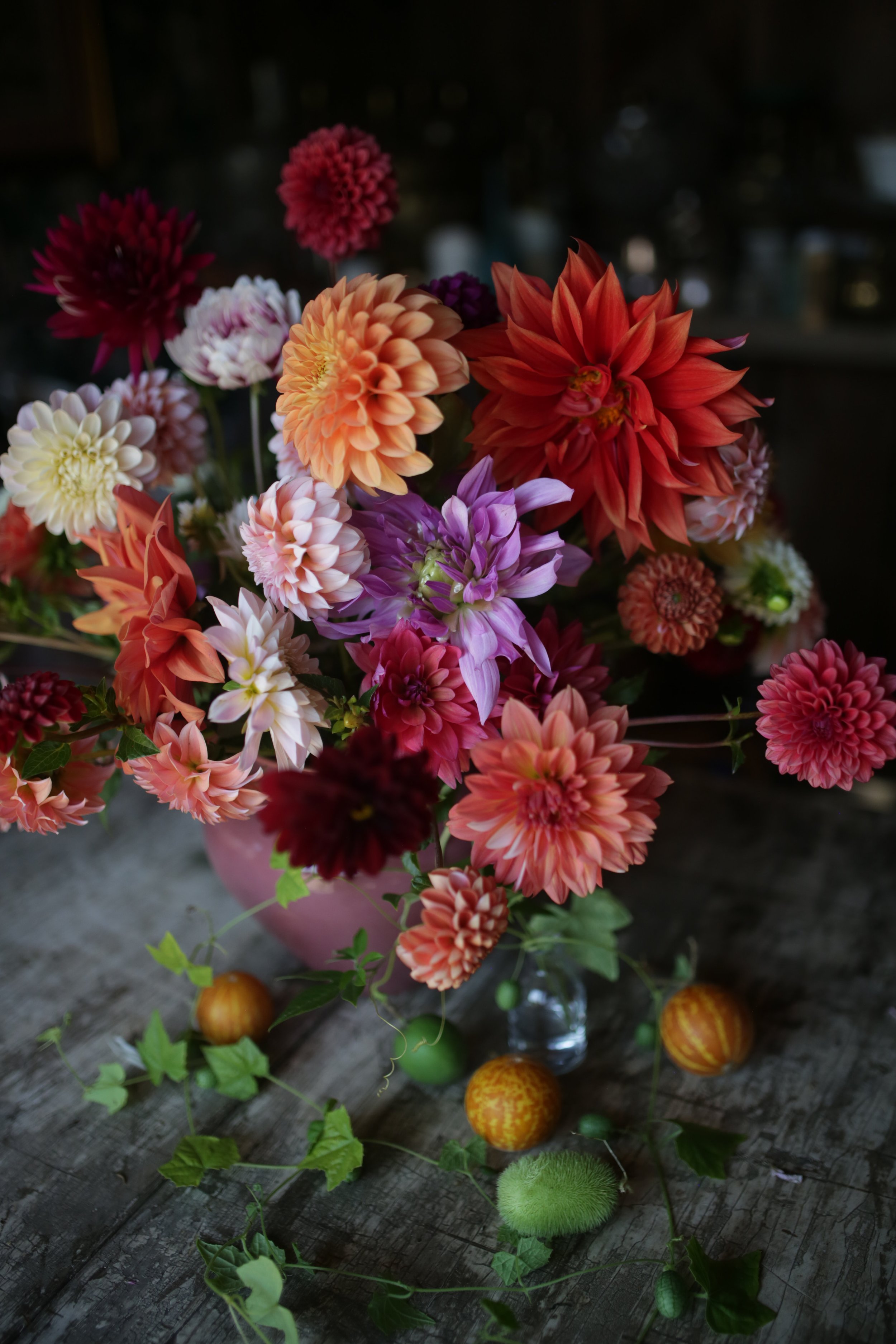What to plant in June
When June rolls around, it can feel a little bit like you’ve missed the glorious spring window to plant.
And yes, you may have missed the perfect window to plant trees, shrubs, and perennials (have no fear, the perfect fall window of planting is arriving for that soon), but you haven’t missed the opportunity to grow some beautiful flowers that have the two important qualities necessary for planting in June: they grow quickly and, once established, aren’t too bothered by heat and drought.
Below is the list of flowers you can start from seed or tuber now (if you’re reading this in early June), either in a seed tray/pot or directly into a prepared garden bed, and enjoy a harvest of flowers from August to the first frost.
Sunflowers
Let’s start with a caveat: the sunflowers that fit into the cut-and-come again category are the branching varieties. The single stem varieties that you tend to see in the large farm fields are one-and-done bloomers that are still fun to grow, but won’t give you as much full season interest as the branching varieties.
Personal favorite branching varieties include: Strawberry Blonde, Chocolate, Italian White, and Rouge Royale.
Planting sunflower seeds is super easy: simply plant about 1 inch deep and keep watered! Or, if you want to watch the magic unfold, these are great seeds for starting in wet paper towels kept in a plastic container and put into a sunny spot indoors before planting out.
Newly emerged sunflowers are favorites of slugs, so sprinkling some Sluggo or other wall natural/pet safe slug repellant around the area you’ve planted them in is a good idea.
Sunflowers are also favorites for furry creatures to nibble on, so netting or a cloche on top of young plants is a good way to keep them safe.
Zinnias
Zinnias come in so many shapes, sizes, and colors that it can be hard to choose which ones to grow. Brightly colored varieties are easily found in most any big box or local store, but the gorgeous pastel and newly bred varieties are best sourced online.
Personal favorites include the Queen Lime series, Zinderella Peach, and Oklahoma White, and the newly released Ballerina zinnia found via Johnny Seeds.
To plant zinnias, simply put the seed about 1” deep.
Cosmos
Word of caution with these beauties: if you don’t like flowers that have a tendency to flop with a rainstorm without tall staking, then these may not be the best choice for your garden. However, if you’re willing to deal with a little bit of floppiness, then there are shorter varieties of cosmos that have a better chance of bouncing back and staying full.
Just as with zinnias, simply plant the seeds one inch deep.
Taller varieties that I grow every year no matter the effort to keep them upright include Afternoon White, Seashells Mix, and Cupcakes Blush.
Shorter variety favorites include Apricot Lemonade and Xanthos.
Hyacinth Bean Vine
One of my forever favorite annual vines is Hyacinth Bean (either the white or purple varieties), for the fact that the vine is so incredibly full and lush, covering a fence/railing/wall in a short amount of time. It also produces beautiful flower shoots that turn into interesting bean pods.
The flower stems are excellent in bud vases, and young pods can be eaten raw. It’s recommended that mature seed pods be cooked thoroughly before consuming.
I like to soak the seeds overnight before planting, and then they’re covered with about an inch or two of soil when put into a seed tray or directly outdoors. Expect to see them emerge and grow very quickly! They’re a fun seed to grow, especially with young children (this plant gives Jack and the Beanstalk vibes).
Dahlias
Dahlia plants are typically grown via tubers (unless you want a bit a surprise mix, which can be grown via seeds), and the good news is that if you haven’t already purchased any, you can typically find them highly discounted at this point in the season.
A dahlia tuber produces an eye which then becomes a plant, and planting them is simple: place the tuber on its side as much as possible in a shallow hole. You want the tuber to be covered completely but not have more than an inch or two of soil on top, in order to prevent tuber rot.
It’s a good idea to not water the dahlia tuber until you see the first green shoot appear aboveground. Then, keeping the soil moist but not drenched is a good idea as it begins to reach maturity. After that, dahlias require a deep watering a couple of times a week unless it rains.
Dahlias often require staking, so it’s a good idea to go ahead and put a stake a few inches behind where you planted the tuber at planting time. That way, you won’t risk accidentally pieces the tuber and it’s ready to go when twine is required to hold the plant upright.
Dahlias planted in June should start producing flowers in mid-late August, and they will continue to put out more blooms the more you cut, all the way up to the first frost.
To learn more about dahlias and favorite sources, click here !





